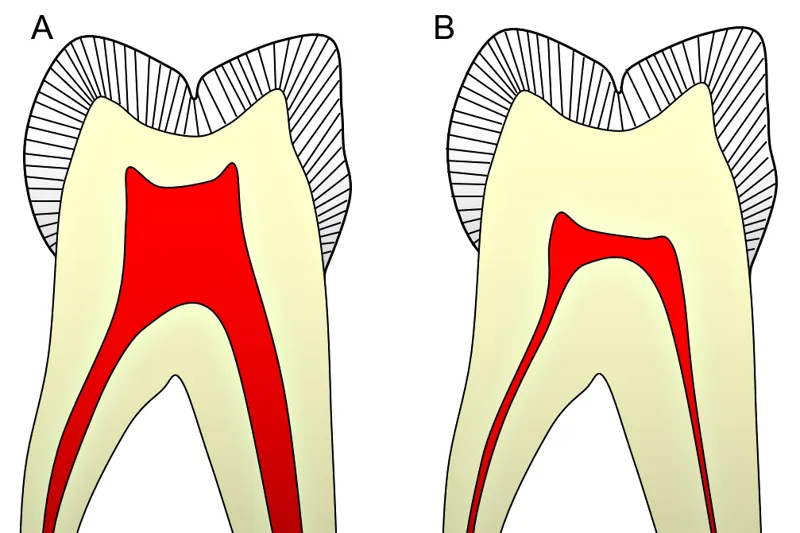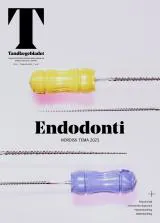Pulpabiologi
Denne oversigtsartikel beskriver den sunde pulpas basale struktur og fysiologi samt mekanismerne bag start og progression af inflammatoriske reaktioner i pulpakammerets og rodkanalernes lidet eftergivelige miljø. Ligeledes diskuteres mekanismerne ved smerte og hypersensibilitet.

Pulpakomplikationer som følge af caries, omfattende slid eller andre eksterne irritamenter kan føre til symptomgivende eller asymptomatisk inflammation og efterfølgende til hel eller delvis nedbrydning af pulpavæv og nekrose. Behandling af en syg pulpa kan tage sigte på at bevare pulpas vitalitet, enten helt eller delvis, og kan i så fald betegnes som “forebyggende endodonti”. En forståelse af pulpadentin-kompleksets fysiologi og patologi er en forudsætning for at kunne stille den rigtige diagnose og dermed iværksætte den korrekte behandling. Denne oversigtsartikel beskriver den sunde pulpas basale struktur og fysiologi og mekanismerne bag start og progression af inflammatoriske reaktioner i pulpakammerets og rodkanalernes lidet eftergivelige miljø. Ligeledes diskuteres mekanismerne ved smerte og hypersensibilitet og de måder, pulpadentin-komplekset kan reagere på ved gentagne eller vedvarende smertevoldende påvirkninger. Behandlingsmulighederne, der strækker sig fra cariesekskavering og kavitetsforsegling over partiel eller komplet pulpotomi til fuld endodontisk behandling, vil blive omtalt i detaljer i andre artikler i dette tema under emnerne diagnostik, vital pulpaterapi og nødbehandling.
Klinisk relevans:
Viden om pulpa-dentin-kompleksets reaktioner på caries og andre eksterne irritamenter gør klinikeren bedre rustet til at stille den rigtige diagnose og iværksætte den korrekte behandling.Pulp biology
Pulpal complications of caries, extensive wear or other external irritation may result in symptomatic or asymptomatic inflammation, followed by partial or progressive pulp tissue degradation and necrosis. Appropriate treatment of diseased pulp may aim to preservation of vitality of the pulp, either completely or partially, and can thus be regarded as “preventive endodontics”. Understanding of the physiology and pathology of dentin-pulp complex is a prerequisite for the proper diagnosis and thus the correct choice of treatment. This review describes the basic structure and physiology of a healthy dental pulp and the principles of the initiation and progression of inflammatory reactions in the low-compliance environment of pulp chamber and root canals. The mechanisms of the pain and hypersensitivity, as well as the means that the dentin-pulp complex may react to a repeated or persistent pain-producing irritation, are also discussed. The chosen treatment modalities may vary from caries excavation and cavity sealing, partial or complete pulpotomy to an endodontic treatment, and will be discussed in detail in other articles in this theme dealing with the diagnostics, vital pulp therapies and emergency treatment.


